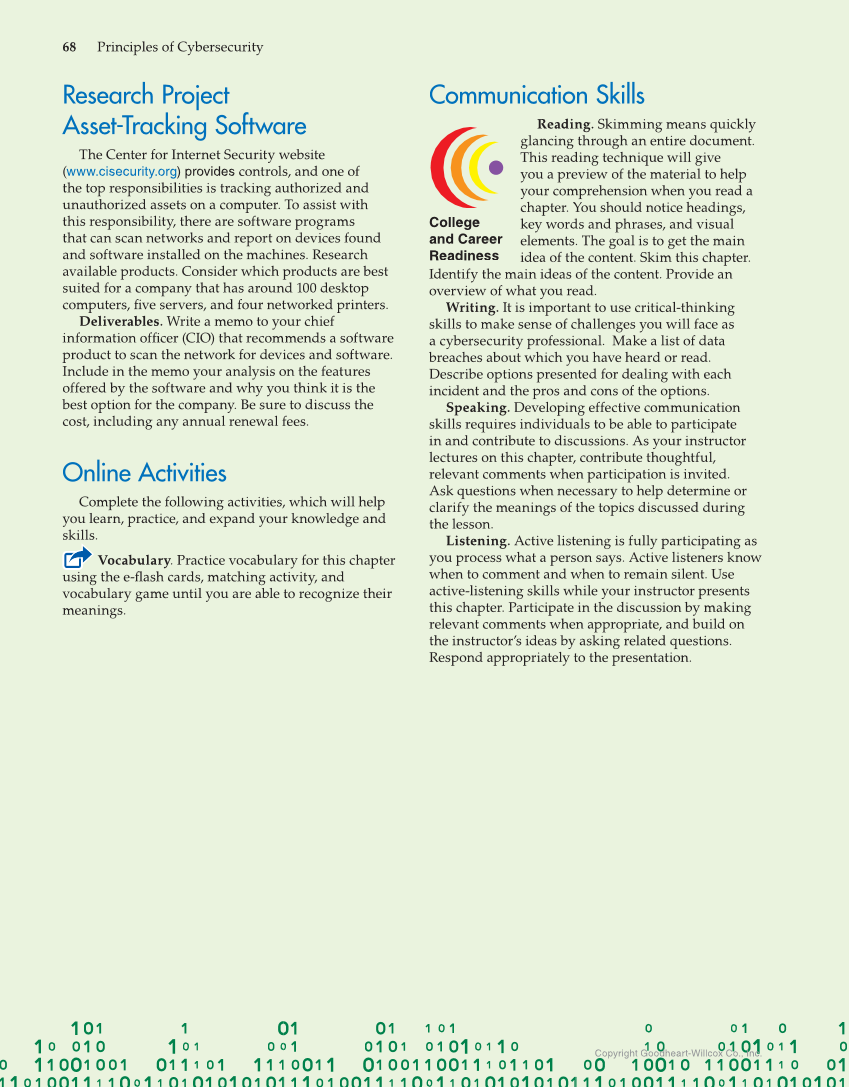Copyright Goodheart-Willcox Co., Inc. 68 Principles of Cybersecurity Research Project Asset-Tracking Software The Center for Internet Security website (www.cisecurity.org) provides controls, and one of the top responsibilities is tracking authorized and unauthorized assets on a computer. To assist with this responsibility, there are software programs that can scan networks and report on devices found and software installed on the machines. Research available products. Consider which products are best suited for a company that has around 100 desktop computers, fi ve servers, and four networked printers. Deliverables. Write a memo to your chief information offi cer (CIO) that recommends a software product to scan the network for devices and software. Include in the memo your analysis on the features offered by the software and why you think it is the best option for the company. Be sure to discuss the cost, including any annual renewal fees. Online Activities Complete the following activities, which will help you learn, practice, and expand your knowledge and skills. Vocabulary. Practice vocabulary for this chapter using the e-fl ash cards, matching activity, and vocabulary game until you are able to recognize their meanings. Communication Skills Reading. Skimming means quickly glancing through an entire document. This reading technique will give you a preview of the material to help your comprehension when you read a chapter. You should notice headings, key words and phrases, and visual elements. The goal is to get the main idea of the content. Skim this chapter. Identify the main ideas of the content. Provide an overview of what you read. Writing. It is important to use critical-thinking skills to make sense of challenges you will face as a cybersecurity professional. Make a list of data breaches about which you have heard or read. Describe options presented for dealing with each incident and the pros and cons of the options. Speaking. Developing effective communication skills requires individuals to be able to participate in and contribute to discussions. As your instructor lectures on this chapter, contribute thoughtful, relevant comments when participation is invited. Ask questions when necessary to help determine or clarify the meanings of the topics discussed during the lesson. Listening. Active listening is fully participating as you process what a person says. Active listeners know when to comment and when to remain silent. Use active-listening skills while your instructor presents this chapter. Participate in the discussion by making relevant comments when appropriate, and build on the instructor’s ideas by asking related questions. Respond appropriately to the presentation. College and Career Readiness
